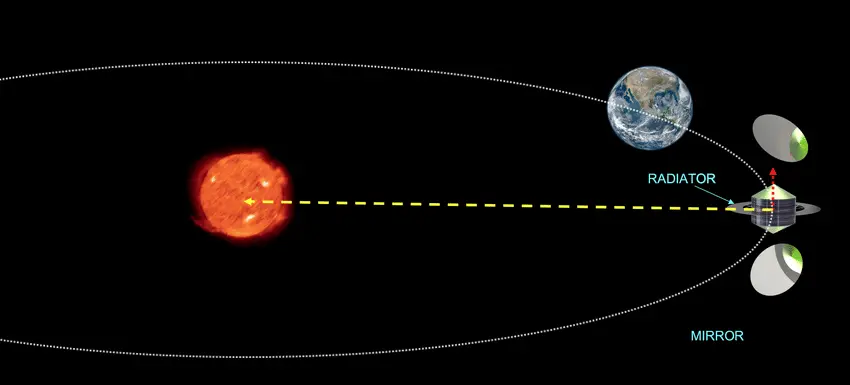A Sun Synchronous orbit is one whose orientation never changes about the sun.
This unique low-Earth orbit is characterized by a fixed angle between its orbital plane and the sun’s direction.
Simply put, the sun’s direction and synchronous orbit plane always intersect at a fixed angle.
The satellite’s orbital plane is not keeping a constant angle with the sun’s direction.
The satellite’s orbit is facing the sun in position A. However, there is a tiny shift in the orbital plane’s orientation at position B.
Table of Contents
The earth’s rotation around the sun is the primary cause of this. Launching the satellite into a retrograde orbit, where it travels westward, can prevent this collision. Precession is the term for the rotation that occurs in the sun-synchronous orbital plane.
Consequently, the orbit will always follow the direction of the sun.
Sun Synchronous orbit’s primary benefit is its ability to repeat its course every half day, which is useful for taking measurements at specific times of the day and night.

ref: googleimages
Sunspots
These are alterations on the sun’s surface. Sunspots appear to be dynamic regions with significant solar energy releases. The sunspot cycle’s unpredictability causes marked variations in the space radiation environment.
The existence of two main Van Allen radiation belts is attributed to the differences in radiation levels at different latitudes, altitudes, and inclinations around Earth.
The trapped protons and electrons move along magnetic lines from N to S, spending more time near the equator than the poles. The longer a satellite orbits and the closer it gets to the radiation belts, the more cumulative radiation it absorbs. Select an orbit with lower radiation levels.
For satellites, use radiation-hard (rad-hard) devices.
Radiation Effects
There are two primary ways that radiation affects electronics in space.
Total Dose: The cumulative radiation impact over the electronics’ lifetime in space caused by trapped protons and electrons in the Van Allen belts, deteriorates the transistor and chip performance of the electronics.
Single Event Upsets: These are brought on by heavy ions that are expelled by the Sun; typically, protons affect circuitry at crucial points, depositing enough charge to trigger an energy flip, which is the conversion of an open circuit to a closed one or the creation of a logical one rather than a logical zero.
Applications of Sun Synchronous Orbit
- Sun Synchronous orbit satellites offer consistent illumination for Earth observation, enabling high-quality imaging for weather forecasting, environmental monitoring, and resource management.
- Sun Synchronous Orbit satellites enable weather satellites to maintain consistent daily observation times of Earth, which is crucial for accurate weather forecasting and climate monitoring.
- Military reconnaissance satellites utilize Sun-synchronous orbits (SSO) to collect intelligence and monitor for changes.
- SSO satellites help monitor environmental changes, assess natural resources, and support sustainable development.
- SSO satellites provide timely imagery and data for disaster management, aiding rescue operations, resource allocation, and recovery efforts.
Related FAQs of Sun Synchronous Orbit
1. What is a Sun-synchronous Orbit (SSO)?
- Sun-synchronous orbit is a specific type of polar orbit where the satellite passes over any given point on Earth’s surface at the same local solar time each day.
- This ensures consistent illumination for observation and data collection.
2. Why is a Sun-synchronous Orbit important for Earth observation satellites?
- SSO provides consistent lighting conditions, allowing for high-quality, comparable images and data collection over time.
- This is crucial for monitoring changes, tracking patterns, and creating accurate maps.
3. What types of satellites use Sun-synchronous Orbit?
- Earth observation satellites, weather satellites, military reconnaissance satellites, and environmental monitoring satellites are the most common types of satellites that utilize SSO.
4. What are the challenges of maintaining a Sun-synchronous Orbit?
- SSO requires precise orbital maneuvers to counteract the effects of Earth’s oblateness and atmospheric drag, which can gradually alter the satellite’s orbit over time.
- These maneuvers consume fuel and limit the satellite’s lifespan.
5. Are there any disadvantages to using a Sun-synchronous Orbit?
- Despite its numerous advantages, SSO might not be the optimal orbit for missions requiring continuous communication with a specific ground location.
- Additionally, the polar nature of the orbit limits coverage to high latitudes, making it less suitable for certain types of communication satellites.
